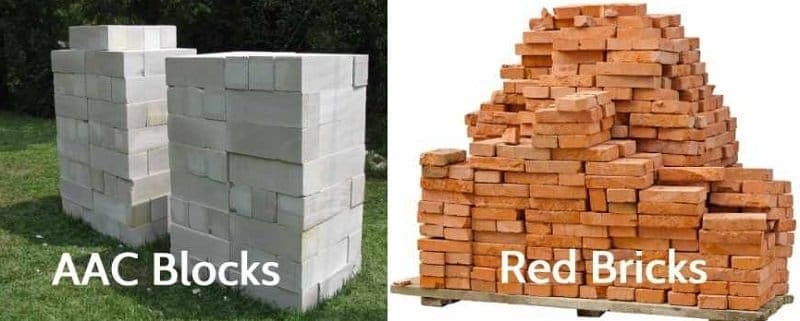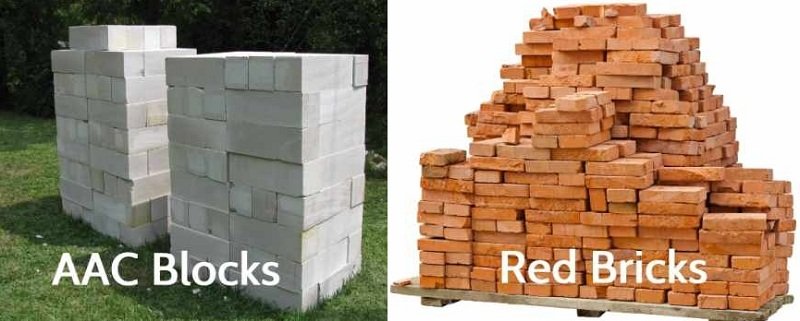
Red bricks are one of the oldest building materials, used in the construction industry.
With the advent of new technological developments, people are now shifting towards a sustainable environment. Nowadays for RCC framed structures, AAC blocks are widely used in wall units as they are sustainable and lightweight. Hence there is a confusion as which material has more lifespan. Here we have given brief information on the life of AAC blocks vs red bricks, which homeowners should know.
Comparison of AAC Blocks and Red Bricks in Terms of Longevity and Durability

AAC blocks are a recent invention and are more commonly used for about less than a decade in South-East Asia, while modern red bricks are being used in the construction industry since last 250 years. However red bricks are being used for 5000 years dated back to Harappan civilization. Therefore, a lot of research and experience is available for red bricks, which is not the case with AAC blocks. There are many structures which are made using red bricks that are centuries old and they are still intact and hence they are time-tested. While AAC blocks have yet to prove themselves and pass the test of time.
Once red bricks are manufactured according to the system of standard processes, they can last very long in normal conditions. As AAC blocks contain cement, it undergoes carbonation process. Red bricks are as such chemically more or less inert, while AAC blocks will react chemically, though slowly. Thus, red bricks are supposed to have more life as compared to AAC blocks, provided all the requirements and specifications are met according to the relevant national or international building codes. As per Clay Brick Association (CBA), the lifespan of red bricks is estimated up to 500 years.
Thus when we compare the life of AAC blocks vs red bricks as an independent wall unit, red bricks certainly have more life. However when we compare the life of red brick masonry vs AAC block masonry, much will depend upon the type of mortar, joints, geometrical properties of walls, its structural design, etc. will matter and the life will be governed accordingly. However, if all parameters are equal, brick masonry will have more life.
Red bricks have high density and hence the dead load of the structure increases, which ultimately leads to an increase in structural steel. Red bricks require clay from the natural soil, and hence continuous production of bricks has lead to the depletion of natural soil and hence not environment-friendly. For RCC framed structures and even for load-bearing structures, AAC blocks are better when compared to red bricks as wall units. They provide a sustainable alternative.
AAC blocks are lightweight blocks and do not require natural soil for production. As they are lightweight blocks they help in saving structural steel for high rise structures. Also, they conduct less heat from the environment and help in energy conservation. As per AAC-India, AAC blocks have an estimated life of almost 100 years. So for residential houses, which are designed for a span of 50 to 80 years, AAC blocks will last up to the designed life of the structure. Hence, one should not worry about 500 years of the life of red bricks as the house itself may not survive, because of the ageing feature of other elements and change in overall fashion, style and architecture. Hence, one should not worry about the life of AAC block. In the long run, AAC blocks are more economical than red bricks.
However, any monumental structure is to be constructed than red bricks are preferred. Hence from the above discussion of the life of AAC blocks vs red bricks, a user should make a judicious choice while constructing a house.
Also Read:
Solid Concrete Blocks vs AAC Blocks: How to Make the Right Choice
Various Shapes of Brick used in Construction
Things to Keep in Mind While Buying Bricks
Various Types of Red Brick Based on Manufacturing Method
































